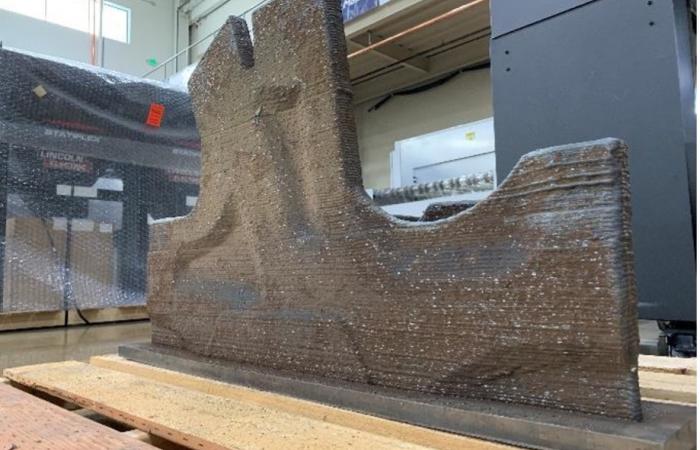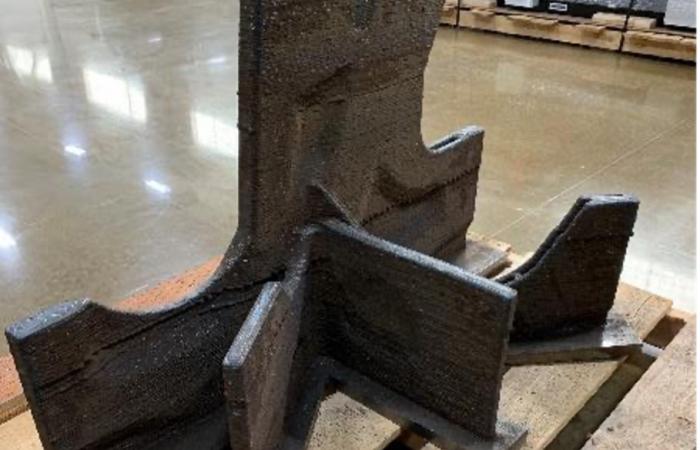Oak Ridge National Laboratory researchers recently used large-scale additive manufacturing with metal to produce a full-strength steel component for a wind turbine, proving the technique as a viable alternative to conventional welding approaches.
Wind energy adoption in the United States depends largely on industry’s ability to manufacture large, complex structures. Additive manufacturing, or 3D printing, could reduce cost and increase production efficiency compared with traditional methods.
In a demonstration, polymer and metal-based 3D printing processes were deployed to manufacture the turbine’s skeleton node, which serves as a load-bearing joint between structural beams. The research team compared performance and total production cost and determined that while near-term costs for 3D printing remained similar to welding, long-term projected future costs proved favorable.
“Metal additive allows for advanced designs and lightweight components that aren’t feasible with traditional processes,” ORNL’s Brian Post said. “This technology could enable the rapid printing of large-scale recyclable metallic wind turbine structures.”



